
If you've ever dreamed of launching your own bathing suit brand, this guide will help you turn that idea into reality. Learning how to start a bathing suit line requires understanding design, production, costs, and marketing.
From choosing fabrics to reaching customers online, each step plays a role in building a successful brand. By following this guide, you'll get clear insights on creating, selling, and growing your swimwear business in 2025.
Why Sell Bathing Suit Online?
Selling swimwear online gives you access to a global market without the limitations of a physical store. By 2030, the global bathing suit market is expected to reach $36.15 billion, showing the huge potential for new brands.
Reach Customers Anywhere
When you sell online, you can reach customers across different countries and demographics. This allows you to:
- Offer unique designs to niche audiences
- Test limited collections without high upfront costs
- Build a loyal customer base with targeted marketing
Tap Into Rising Disposable Income
Global increases in disposable income and personal spending power are driving more people to spend on leisure activities, including swimwear.
People are willing to invest in higher-quality, stylish bathing suits, which is an opportunity for your line to stand out.
Steady Market Growth
The industry is projected to grow steadily, with a compound annual growth rate of 6.8% from 2024 to 2030. This growth is driven by increasing leisure spending and demand for stylish, quality swimwear.
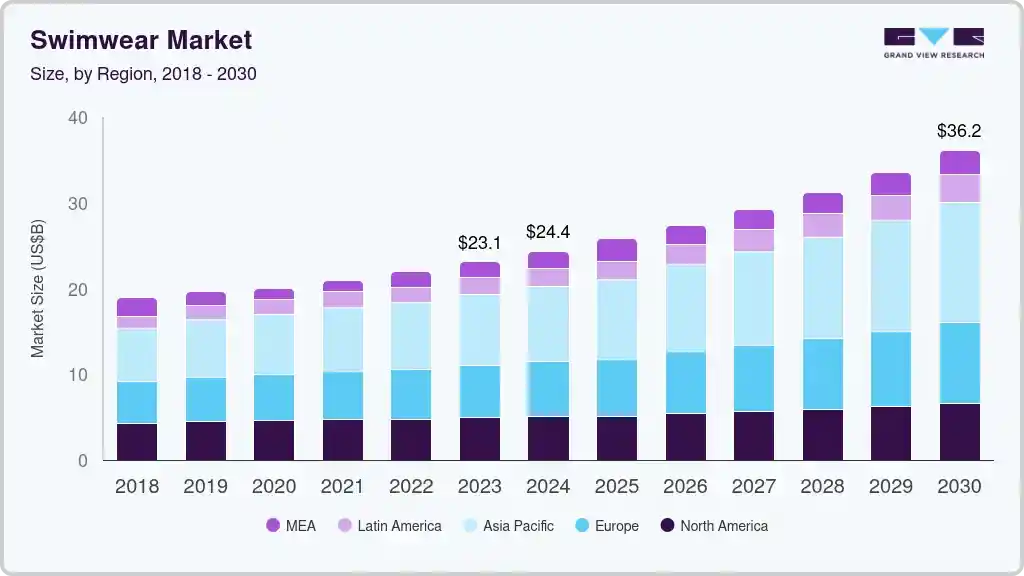
Flexible and Scalable
Online sales let you start small and scale as demand grows. You can adjust designs, sizes, and marketing strategies quickly.
You also gain direct insights from customer feedback, helping you improve your products and grow sustainably.
Selling bathing suit online combines low overhead, global reach, and adaptability, making it a smart starting point for a new brand in 2025 and beyond.
How to Start a Bathing Suit Line with 6 Steps
1. Research the Market and Find Your Niche
Before you even sketch a swimsuit, spend time understanding the market. Look at trends, check which styles are selling, and notice gaps that other brands aren't covering.
Are there opportunities in sustainable fabrics, plus sizes, or unique prints? Take notes on what customers like and dislike.
This step saves you a lot of trial and error later and helps your brand stand out instead of blending in.
2. Create a Strong Brand Identity
Your brand is more than a logo—it's a feeling people get when they see your swimsuits. Think about your colors, style, and what message you want to send. Ask yourself:
- Who is your target audience?
- What lifestyle does your brand represent?
- What story will make people connect emotionally with your products?
A clear identity makes marketing easier and builds loyalty, especially when customers can recognize your swimsuits at a glance.
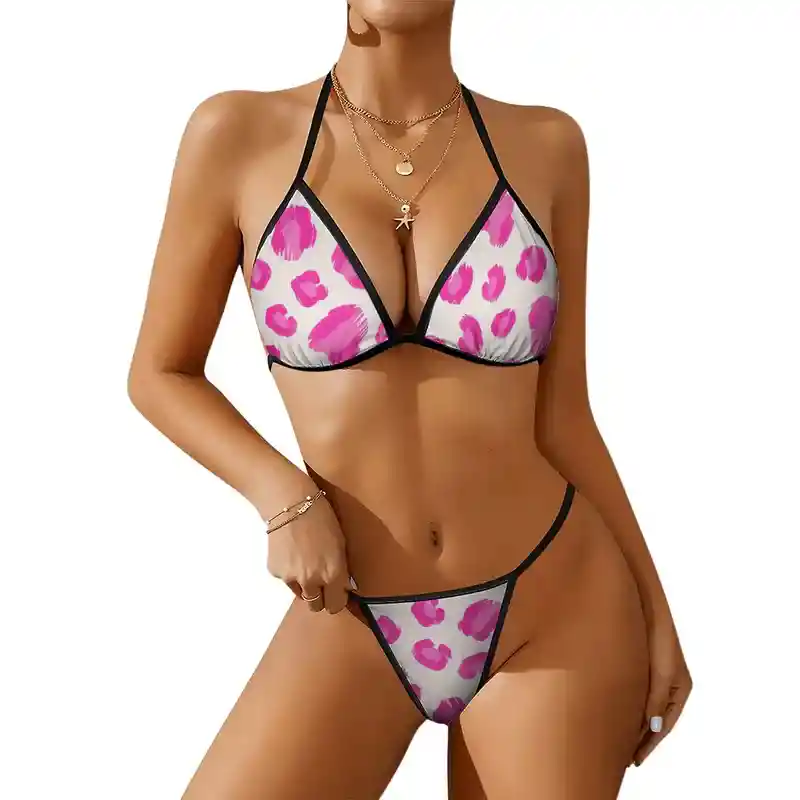
Print on Demand Thong Bikini Customized Services - Women's Clothing - PrintKK
3. Design Your Collection
Start small, maybe with 3–5 signature pieces that reflect your style. Sketch or use design software to visualize your ideas.
Focus on fabrics that feel good on the skin, patterns that pop, and cuts that flatter different body types. Quality matters more than quantity—people will remember a swimsuit that fits perfectly and lasts a long time.
Test different materials and trims, and don't ignore the importance of swimwear hardware like adjustable straps and secure clasps.
4. Find the Right Manufacturer
Finding a reliable manufacturer can make or break your line. Search for partners who understand bathing suit production and can handle your chosen fabrics.
Ask for samples, check their turnaround time, and compare costs carefully. You might work with domestic or overseas manufacturers, but make sure communication is clear and deadlines are realistic.
Good manufacturers will also advise on sizing, durability, and construction tips that save you headaches later.
5. Set Up Sales Channels
Decide how you want to sell your swimsuits. You could open an online store, partner with boutiques, or attend local pop-up events.
Direct-to-consumer online sales are great for building a loyal audience, while wholesale deals can expand your reach faster.
Think about logistics too: shipping, returns, and inventory management are part of the customer experience. Planning these early makes scaling easier once demand grows.
6. Launch Marketing and Build Your Audience
Even the best swimsuits won't sell without marketing. Start building an audience on Instagram, TikTok, and Pinterest with behind-the-scenes content, styling tips, and sneak peeks.
Collaborate with influencers, create email campaigns, and gather customer feedback. Storytelling is powerful—share the journey of your brand, your design inspirations, and your sustainability efforts if any.
Engaged followers are more likely to become loyal customers who spread the word.
How Much Does It Cost to Start a Bathing Suit Line?
1. Design and Prototyping Costs
Before you make a single swimsuit, you need designs and samples. This usually costs more than beginners expect. Hiring a designer can range from $500 to $3,000 per collection depending on experience.
If you want unique prints or patterns, expect additional costs for digital artwork or custom fabric swatches. You also need to create prototypes for testing fit and comfort.
A single prototype can cost $50–$200, and you might need several rounds to get it right.
2. Materials and Fabric Expenses
Fabric is the backbone of your swimwear. High-quality swimsuits often use nylon-spandex blends, Lycra, or eco-friendly fabrics, which can be expensive.
For a small batch of 50 swimsuits, materials alone could cost $1,000–$2,000. Don't forget linings, clasps, elastic bands, and threads.
Each detail adds up, and low-quality materials can ruin your brand's reputation. Consider ordering swatches first to see how the fabric feels and stretches before committing.
3. Manufacturing and Production Costs
Manufacturing can vary widely. Small local manufacturers might charge per piece, anywhere from $15 to $50, while overseas production could be cheaper but comes with shipping delays and minimum order quantities. Some things to consider:
- Minimum order quantity (MOQ) requirements
- Shipping fees
- Custom labeling and packaging costs
- Quality control inspections
If you skip quality checks, you risk returns or unhappy customers, which can end up costing more in the long run.
A cheaper alternative is using print-on-demand (POD) services. Instead of ordering hundreds of swimsuits upfront, you can print designs only when a customer buys.
This reduces inventory costs to almost zero, but keep in mind POD fabrics and fits may be limited compared to custom manufacturers.
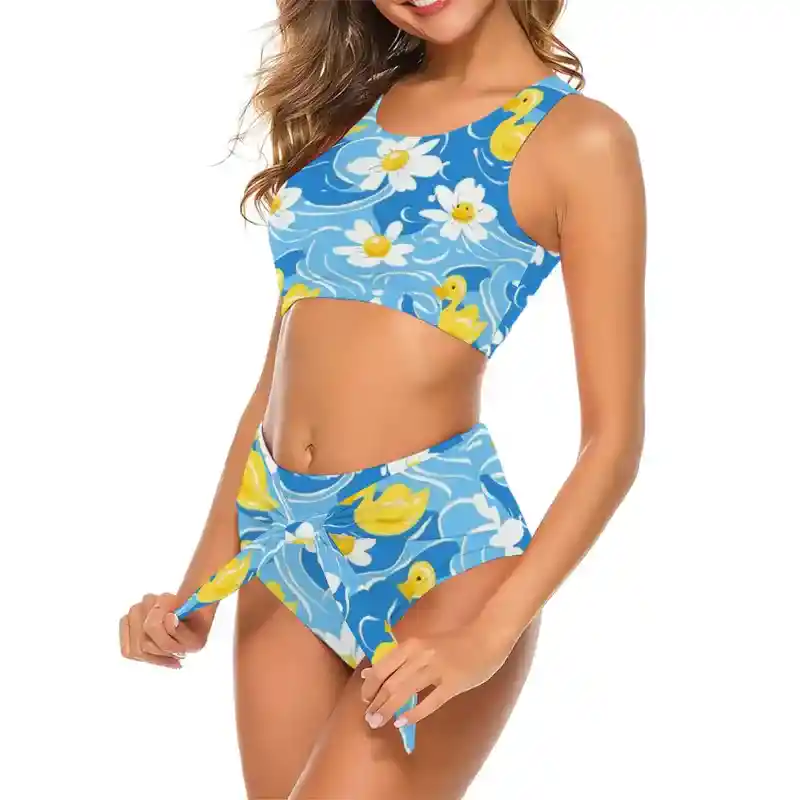
Print On Demand Tie-Detail Two Piece Swimsuit Customized Services - PrintKK
4. Branding and Marketing Budget
Even the best swimsuits won't sell without marketing. Setting up a professional website, social media campaigns, and influencer collaborations can easily cost $500–$3,000 at the start. Think about:
- Logo and brand identity design
- High-quality photoshoots for your collection
- Social media ads and promotions
Investing here is crucial because your first impressions online can make or break your brand.
5. Miscellaneous Startup Costs
Starting a swimwear line is a big investment, usually costing $5,000–$20,000 for a small professional collection.
Don't forget extra expenses like licenses, insurance, or packaging—first-time founders often underestimate these by 20–30%.
Using POD can lower costs significantly; you might only need $200–$500 to test designs without risking much money upfront.

How Bathing Suit Brands Effectively Meet Consumers' Needs
Understand What Your Customers Really Want
Modern bathing suit is no longer just "bikini plus beach." When you look at real-life shopping scenarios, every customer has their own preferences.
Some want sporty designs, others need extra coverage to avoid wardrobe malfunctions, some look for slimming effects, and a few chase bold colors.
Competing in the bathing suit market isn't just about offering more styles or lower prices. It's about showing that you understand who your customer is and what they want. Your designs, sizing, and overall experience must reflect that understanding.
Offer Flexible and Mixable Designs
Consumers today want swimsuits that let them express personal style. Providing mix-and-match options for tops and bottoms gives them freedom to create different looks for different moods, body shapes, or occasions.
This flexibility not only makes your collection more attractive but also encourages repeated purchases. When customers can assemble their own sets, they feel a stronger connection to your brand and are more likely to come back for new pieces.
Focus on Sustainability in Production
Sustainability is a key concern for modern shoppers. Producing in small batches can prevent overstock and reduce fabric waste. Optimizing your design and cutting process ensures higher material efficiency.
Limited runs also make products feel unique and reduce the chance of duplicate designs in the market. This approach aligns environmental responsibility with consumer desire for distinctive items, giving buyers both practical and emotional satisfaction.
Solve Sizing Challenges
Sizing is one of the biggest obstacles in swimwear shopping, especially for non-standard body types. Offering a full range from XXS to 4X, along with real model photos for each size, helps customers visualize fit and style.
This reduces the trial-and-error stress and builds confidence in buying. It also communicates that your brand respects all body types, strengthening emotional connection and trust with your audience.
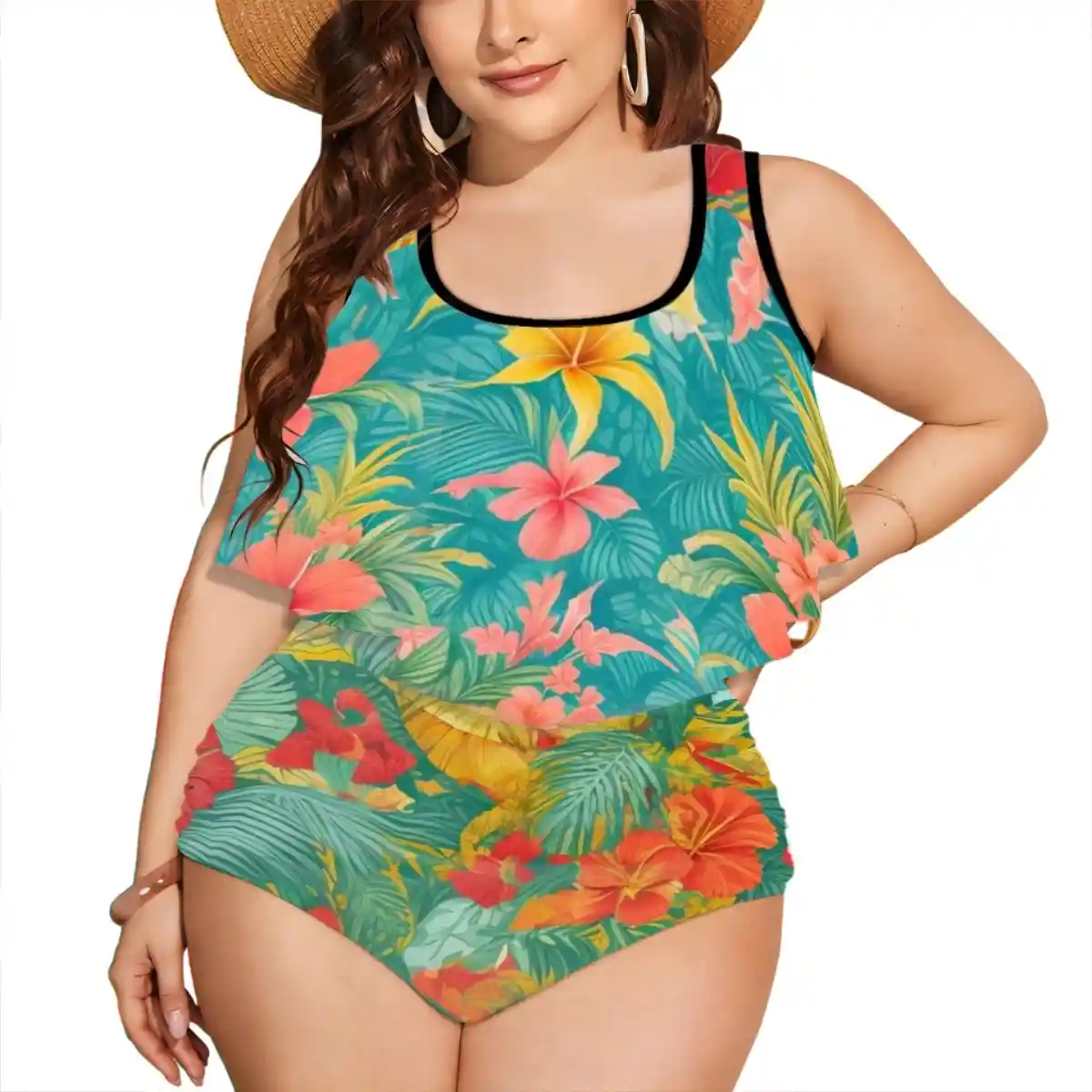
Print On Demand Plus Size Ruffle Two Piece Swimsuit Customized Services - PrintKK
Leverage Reviews and Visual Feedback
Bathing suit is highly personal, so customers often rely on reviews before making a decision. Show authentic feedback covering fit, comfort, cut, and usage scenarios.
Allow space for suggestions to create a transparent and trustworthy environment. Real reviews make it easier for potential buyers to form realistic expectations, lowering hesitation and increasing the likelihood of purchase.
Use Tools and Promotions to Guide Choices
Online size guides, measurement tips, and quiz-style recommendations can significantly reduce sizing anxiety. These tools improve accuracy and help users find the right fit without frustration.
On the promotion side, consider strategies that add visible value, like buy-one-top-get-a-bottom offers. Combined with clear messaging around flexibility ("Mix and Match," "Create Your Own Look") and inclusivity ("full coverage swimwear," "for every body"), these approaches strengthen trust and encourage customers to act.
Build Trust Through Marketing and Social Content
Traffic to your website comes from direct visits, search, social media, and paid ads. Short videos showing diverse body types and styling tips, combined with tags like "body positivity" or "modest fashion," convey real confidence and break the standard body-only marketing model.
Seasonal campaigns that combine limited-time offers with visual demonstrations can increase engagement and drive visitors to your site. Using emotionally resonant messaging in ads helps customers feel seen, boosting both click-through and conversion rates.
Top 5 Bathing Suit Trends You Need to Know in 2025
1. Innovative Designs Lead the Trend
In 2025, bathing suit is not just functional but also fashion-forward. Users are drawn to details like stripes, cut-outs, and bows.
If you focus on creative designs, your line can stand out in a crowded market. Your customers will look for pieces that make them feel stylish both in and out of the water.
2. Advanced Functionality Meets Diverse Needs
Swimwear buyers care about more than appearance. They want comfort and practicality, like slimming cuts, color-enhancing fabrics, and quick-dry materials.
When designing your line, consider how your swimsuits can support different body types and active lifestyles. Functionality can be as important as style.
3. Style Variations for Personal Choice
Different occasions call for different swimsuits. Popular options include competitive swimsuits, bikinis, and one-pieces.
Offering diverse styles lets you meet the needs of various customers. You can target beachgoers, pool swimmers, or fitness enthusiasts with pieces that suit their specific activity.
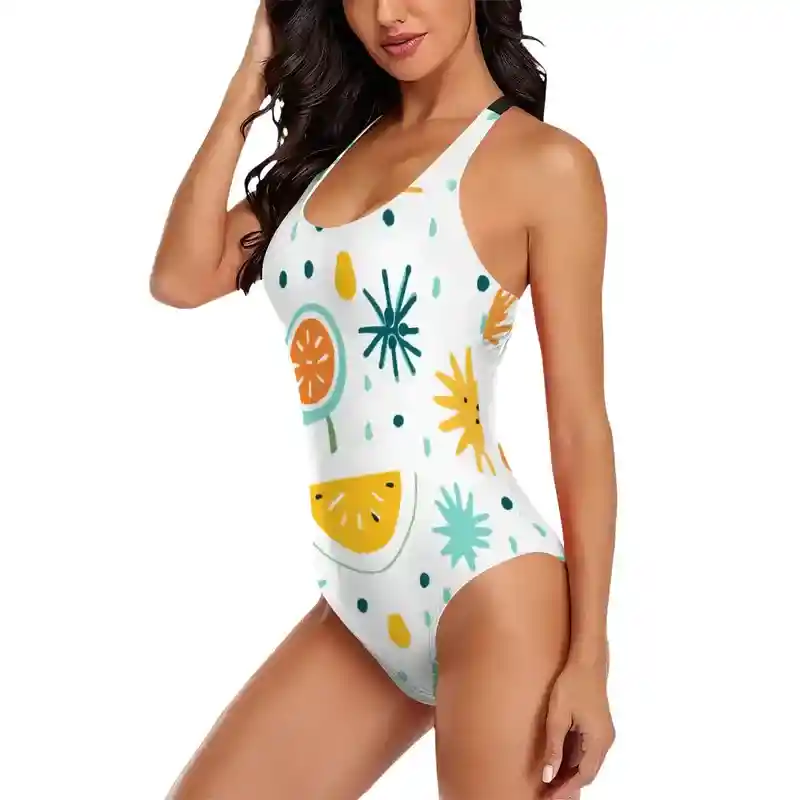
Print on Demand Cross-Back One Piece Swimsuit Women - Women's Clothing - PrintKK
4. Fashionable and Flexible Looks
Swimwear styles are becoming more versatile. From tropical vacation vibes to cute, sexy, or comfortable options, multiple trends run at once.
You can appeal to different tastes by mixing patterns, fabrics, and cuts. Customers appreciate a brand that adapts to changing fashion preferences.
5. Expanded Usage Scenarios
Bathing suit is no longer limited to pools or beaches. People wear swimsuits for resorts, water parks, family activities, and even casual outdoor fun.
By recognizing new usage scenarios, you can design versatile pieces that widen your target market and increase potential sales.
Read More:
Expert Tips
Learning how to start a bathing suit line gives you the tools to launch your own brand confidently. You now understand the market, costs, design trends, and online sales strategies.
By planning carefully and focusing on both style and functionality, you can reach customers worldwide. Keep testing ideas, adjusting your designs, and listening to your audience.
Small steps consistently taken lead to growth and long-term success. Your bathing suit line can be both profitable and stylish. With focus, creativity, and persistence, you have what it takes to build a brand that stands out.
FAQs
Is starting a swimwear line profitable?
Starting a swimwear line can be profitable if you manage costs carefully and focus on quality and marketing. Success depends on finding the right audience and offering designs that customers actually want.
What is the profit margin on bathing suit?
Profit margins vary widely, typically between 40% and 70%. Higher-end or custom pieces earn more, while mass-produced items may earn less. Controlling production and marketing expenses directly improves your margin.
What types of designs are popular for custom swimwear?
Popular custom designs often include bold prints, high-waist bottoms, cut-outs, and mix-and-match styles. Minimalist and sustainable fabrics are also trending, appealing to buyers who value both fashion and comfort.
Does swimwear ship worldwide?
Yes, most swimwear brands can ship internationally. Shipping costs and delivery times vary, so it's important to clarify policies, offer tracking, and ensure packaging protects delicate fabrics during transit.










 Global Shipping
Global Shipping






 Made in USA
Made in USA























